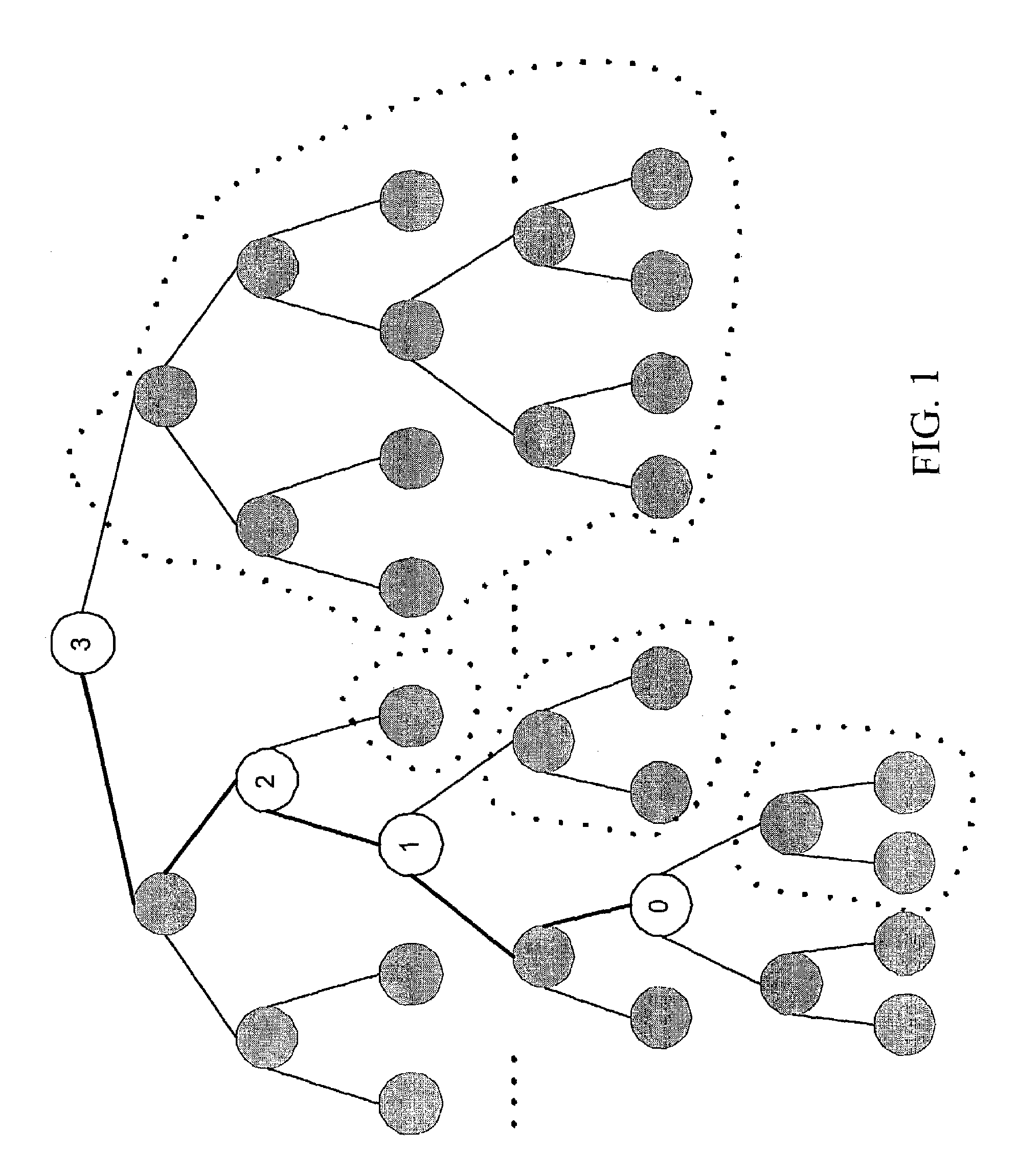O(log n) dynamic router tables for prefixes and ranges
a dynamic router and table technology, applied in the field of log n, can solve the problems of expensive pre-computation, inconvenient dynamic router table use, and inability to insert/delete data at the same tim
- Summary
- Abstract
- Description
- Claims
- Application Information
AI Technical Summary
Benefits of technology
Problems solved by technology
Method used
Image
Examples
example 1
Prefix Lookup
[0041]The set of ranges R, is conflict free and includes the range that corresponds to a prefix. With this assumption, the msr(d)—most specific range of R that matches destination address (d)—is defined for every destination address d (i.e., cannot equal zero) and is the conflict free range set defined as [maxStart(ranges(d)), minFinish(ranges(d))].
[0042]The set of ranges R is mapped in 2-dimensional space using the following equation:
(key1, key2, data)=(finish(R), start(R), data)
where (key1, key2, data) represent a set of tuples, where key1≧0, key2≧0, and no two tuples have the same key1 values, and where data is any information (i.e., next hop) associated with a range R. Thus, each range R is mapped to a point map1(R)=(key1,key2)=(finish(R), start(R)) in 2-dimensional space.
[0043]This map is transformed so that every x-value is unique. By performing the following operation transform1(P), no tow points (P) in the 2-dimensional map have the same x-value:
(x,y)∈point set ...
example 2
Prefix Insertion
[0046]After performing the prefix lookup routing of Example 1, a prefix whose range in [u,v] is inserted by performing the operation transform1(map1([u,v]) in PST1. Where the prefix ([u,v]) is already in PST1, the next-hop information is updated for the prefix in PST1.
example 3
Prefix Deletion
[0047]In accordance with the present invention, a request to delete a prefix results in setting the next-hop associated with this prefix to zero. Thus, the deletion of a prefix does not delete the prefix from PST1.
II. Routing with Nonintersecting Ranges.
[0048]In an embodiment, the current invention addresses a most specific matching range for a given destination. In the case of nonintersecting ranges, the set of ranges R is conflict free. Assuming a range that matches all destination addresses exists in the set R, then a most specific range exists for every defined destination address. Therefore, the ranges can be mapped, transformed, represented on a PST, and operated on according to the steps described above (and shown in FIG. 2) for prefix routing to find the most specific range.
[0049]Insertion of a range is only permitted if the range to be inserted does not intersect any of the ranges R. If the range does not intersect, the steps for insertion described above for...
PUM
 Login to View More
Login to View More Abstract
Description
Claims
Application Information
 Login to View More
Login to View More - R&D
- Intellectual Property
- Life Sciences
- Materials
- Tech Scout
- Unparalleled Data Quality
- Higher Quality Content
- 60% Fewer Hallucinations
Browse by: Latest US Patents, China's latest patents, Technical Efficacy Thesaurus, Application Domain, Technology Topic, Popular Technical Reports.
© 2025 PatSnap. All rights reserved.Legal|Privacy policy|Modern Slavery Act Transparency Statement|Sitemap|About US| Contact US: help@patsnap.com



